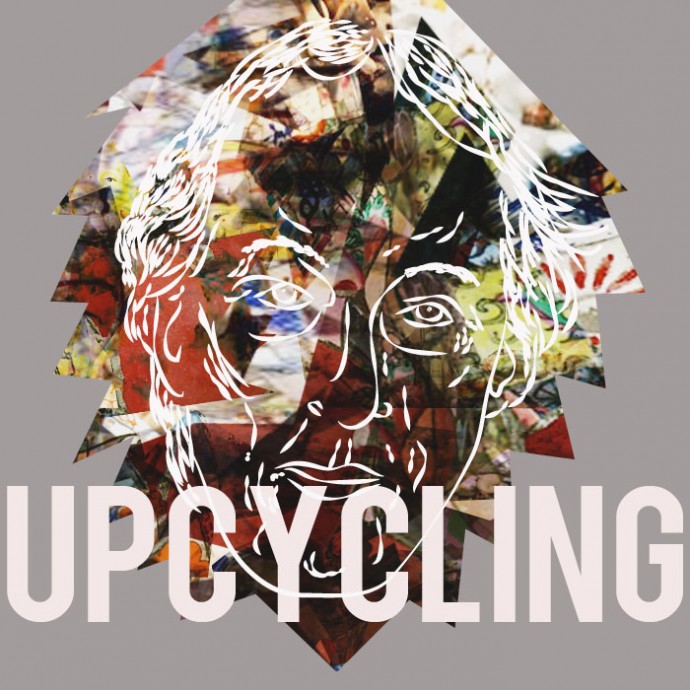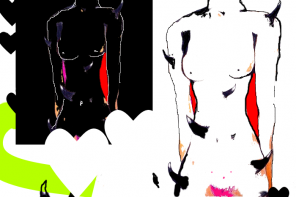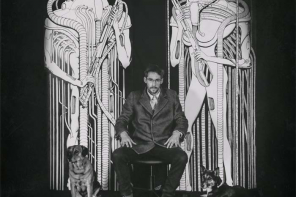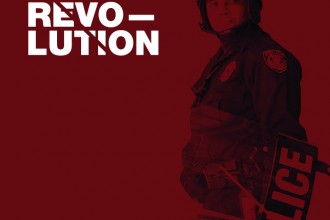Paul Reimert is a Dutch artist living in Berlin, where he has a studio that houses his sculptures made of discarded bits of ceramic and porcelain. His work is unusual in not only his choice of materials, but also in the way he uses them to convey his political opinions and the irony found in daily life. The economy has been harsh on artists lately and Paul explains how this factor can have an impact on the way in which artists have to adjust their creative process to these pressures while still holding on to their artistic identity.
I’ve always been interested in pop art; taking elements that are part of the culture you’re living in and bringing what’s kitschy about them together in an ironic manner. Going to a flea market, I would see these old women with their collections of ugly, kitschy porcelain dog and cat miniatures, cooing, “Oh, that’s such a cute dog!” or, “What a lovely, sweet kitten!” That annoyed me greatly, especially because these hideous cat and dog models were anything but that. Some of these women even had rooms filled with them!
The animal miniatures are mass-produced in a very industrial process – something I despise. Instead, incorporating them into an artwork allows me to create something hand-made, something that takes much more labor and time to produce than originally needed when these miniatures were strolling down an assembly line. I wanted to recycle these things and ‘upcycle’ them by integrating them into a sculpture and placing them in a new context. No, the fact that I use shards of ceramic and porcelain that I collect from flea markets, receive from friends and fans, or buy off the internet is not something I call ‘recycling’. It’s ‘upcycling’: adding extra value to the material you use and increasing its worth.
It is these fragments of ceramic and porcelain that inspire me, together with my knowledge of art history and fascination with ancient Greek and Roman sculptures. The kitschy-ness of the animal miniatures clashes well with the beauty of Classical art. The main thing I’m left worrying about is that I have to be careful not to make kitsch out of kitsch. Although the pieces I work with are often very colourful, I draw the viewer’s eyes to the curvatures and details of the sculptures by centralizing certain colours and shapes. At the same time I have to make sure that the technique I’ve developed over the past 19 years doesn’t become too perfect. You lose the liveliness and spontaneity in your work when it becomes too flawless. The work must still retain its artistic tension with the viewer.
For one of my more recent works, a life-size piggy bank, I also included newspaper and magazine cutouts that were directly or indirectly related to money. By doing this, the piggy bank takes on a more symbolic meaning. When I was a child, I had a small piggy bank that I collected my money in. If I wanted to spend my money, I would have to break it. However, with this sculpture, I did the opposite, reversed the process, and created a new piggy bank and made it very big to represent how money has become not only an integral, but also an overly important part of our society.
Nowadays everything has to do with money. Of course you need money to live and survive, but I think it takes up too much of people’s thoughts and clouds their way of thinking. People look around them and immediately assign it some kind of worth. We wonder how much things cost, discard things when we think they have become outdated, and adhere a certain status to the things we see. Money is taken too seriously.
The piggy bank is one of my most popular pieces. When people ask me about it, I say it’s a piggy bank for investors because investors take the money from others and try to make more money out of it as fast as possible. That to me is a very strange way to think and act. If you create something with your hands or through your job, it’s good to earn money off of it to live on. But if money itself is the sole purpose because it will lead to more money, I think it’s crazy. When people make money out of money, it means that someone had to pay for it first, which creates a kind of imbalance.
I try to make my work significant to me, but I don’t necessarily keep the viewer in mind when I’m sculpting. Nevertheless, my studio is located right near the street so when people pass by, they can see the creative process as the artwork goes through stages. Unfortunately, a criterion I do have to keep in mind is whether or not my work is sellable. I’d love to delve into making more abstract art, but in times of economic hardship, figurative art is easier to sell. Once I’ve sold a piece, my artwork tends to disappear into the private rooms of rich people, hidden from the general public. This is a shame, but I do have to make a living somehow.
This is the irony in being an artist who lives off making art. Many artists with liberal and politically left-oriented ideas end up selling their work to the capitalists. That can be a difficult and uncomfortable position to be in because maybe you want to change the world, maybe you want to change the economic and political situation, but in the end, you are dependent on the people who purchase your art so that you can pay your rent. The subtle message in my work therefore carries an ironic tone. The joke is that in some cases, my art pokes fun at them.
I sometimes clarify my work by explaining that I buy old stuff on flea markets from people who generally don’t have much money and I then gather my old materials in such a way to create something new to sell to the capitalists. That way, I end up giving some of the money I received from the capitalists back to the people who actually need the money. I doubt the capitalists care where I got my materials from and where their money eventually ends up again. Some may see this as a sly defense, but in the end, you rationalize your way of living in a way that you can be content with it.
At the moment, I’m working on my future. It’s tough because I’m turning 60 soon and selling art is a challenge these days. I would like to have a regular income so I’ve been searching for teaching jobs at institutions, cultural centers, and school. If I do go back to teaching, it will mean I have less time to spend on my art. This will make me focus on making art that is truly important to me and relieves the burden of having to make art for a living and thereby sometimes reproducing certain popular sculptures. Last year I repeated a lot of my artwork. I was just copying my own artwork over and over again, and I don’t like that.
If I were to have all the time and money in the world, I would take a break from my sculpting and wait for the moment I felt a burning desire to create something again. I would love to have the luxury to lie back and muse upon what is truly important to me and see where my urges take me. So I guess you could say that I’m at a moment in my life where maybe it’s time for significant change. But I haven’t yet discovered what exactly that change is. But until then, I’m still trying to figure out my aim – and upcycling as I go.







